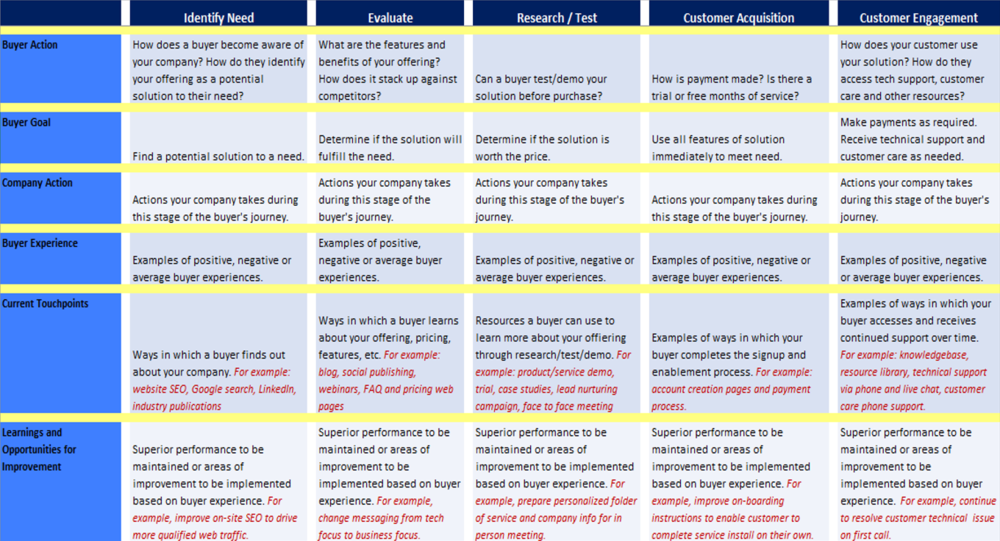BARE Shares – Customer Journey Mapping to Improve Your Customer’s Experience
BARE International shares an article by Lisa Masiello for Business 2 Community: Customer Journey Mapping to Improve Your Customer’s Experience.
‘It wasn’t that long ago that marketers could easily plot the journey a buyer took from initial contact to purchase. The customer may have visited a couple websites to learn more about your product, called your sales team to discuss their options, and asked a friend or two for their recommendations. That was about the extent of it. Marketing controlled the message and the channels.
Today, your buyer is in the driver’s seat. Traditional marketers and the companies they support are being left behind. Some of the causes for this dramatic shift include:
- A highly competitive marketplace with multiple vendors using similar marketing messages.
- Comparable products that are almost indistinguishable from one another.
- The growing use of social selling and relationship building.
- The breakdown of corporate silos resulting in additional people involved in the decision-making process.
- Longer buying cycles.
Define “Journey”

A well thought out and designed journey map can help you and your management team gain insight into how your buyer moves through the sales process from visitor to lead to marketing qualified lead to sales qualified lead, and ultimately, to customer. It can help uncover points at which processes and programs can be improved as well as areas where you are excelling. It will also enable you to deliver the right messages at the right time using the right format, and ultimately increase conversions.
Mapping Your Buyer’s Journey
Because the IT industry is highly competitive, there are more people in decision making roles resulting in longer buying cycles, and customers are looking to develop relationships with brands before they buy, it is critical to understand their needs, what triggers them to action, and what messages and marketing materials resonate with them. Here are 4 key steps in mapping your buyer’s journey:
Step 1: Establish the People to Map
The first step is to work with members of your management team company-wide (not just your sales team) to establish your target customer based on your company goals. You may already have a deep understanding of who your target customer is and may have even created a formal buyer persona for them. If not, take a look at your customer database to gain some insights. Who are your most profitable customers?
Don’t assume that your largest customers will naturally be your best customers. Customers with the highest revenue impact, which close most quickly, may not be the largest customers with the most employees. They may be companies in a specific industry.
Alternatively, industries like healthcare, legal or financial services, where protecting electronic communication and client data is critical, may have the highest close rate but their sales cycle may be doubled because they do more due diligence to ensure that the solution they select will help them meet regulatory requirements.
But, selecting your target customer at the company level is just the first part of the equation.
The next step is to review each of those companies and determine who the key players – including researchers, influencers, and decision-makers – and what their motivations are.
An MSP, VAR, CSP or other IT provider that sells technology products and services to enterprise clients will most likely interact with a prospect’s IT manager, director of IT or CIO. Although they are all technical professionals, it is important to remember that they each have a different stake in the outcome of the purchase and they should not be lumped together with the same marketing messages.
There are also mid-size companies that may have a small IT team of two or three people on staff but no CIO. In this case, it is quite common for these IT professionals to actually report to the company’s CFO.
The CFO may ask a member of his team to research appropriate IT solutions that will meet their needs. When that research has been completed and there is a short list of providers, the CFO will then be brought in to make the final decision.
In this example, it is important to understand that although the IT professional has done the initial research and used his technical knowledge to narrow down the list of technology providers, it is ultimately a business person rather than an IT person making the final decision. Not only is the CFO joining the buyer’s journey later in the process but, if all product features are equal, the CFO’s decision is going to be based on business and financial motives, not technical ones.
So, before you begin to actually map your buyer’s journey, it is important to have an understanding of both your target company and the different stakeholders within the organization.
Step 2: Outline the Buying Behavior for Each Stage in the Buyer’s Journey
Outlining the buying behavior of your customers should be done both internally with your organization as well as externally with your customers.
An Internal Review:
Bring together and review all of the components of customer data from within your organization. That could include mining reports from marketing automation tools like HubSpot, Marketo, and Oracle Eloqua, reviewing your CRM system, customer surveys, website data, listening to sales or technical support conversation your teams may have recorded, and other resources that would give you insights into your customers’ experience at different stages of the buying process.
At the same time, work closely with the key stakeholders within your organization to collect internal insights. This would include interviews with representatives from not just sales and marketing but technical support, and any team that interacts with customers, to get each of their individual perspectives.
Once that’s done, create a written set of assumptions made by reviewing the different resources you collected and talking with your team. Different groups within your organization often have very different ideas about who your customers are, what they care about, and how they perceive interactions with the company.
An External Review:
The next step is to determine if these initial assumptions you made based your internal review really stand up to scrutiny. This is done by reaching out to customers directly to get their actual perspective. This can be done by sending them surveys, conducting phone interviews, bringing them together for focus groups, monitoring your social media networks and more.
Don’t forget that this review can include insights from current customers as well as prospects who selected a competitor, choosing not to become a customer of yours. If you have an opportunity to talk with these former prospects who ultimately chose a different solution, they can provide a great deal of insight into what you should be doing differently.
Step 3: Determine the Preferred Channels, Touchpoints, and Content Needed to Engage Buyers at Each Stage
So, with the actual data in hand – internal data from teams across your company and external data directly from customers – you can now create a journey map. This journey map will include how customers interact with your company today, what they are looking for from each interaction they have with your company and what is missing. It will show you where the different steps in the journey are going well and where they are not going so well, which will enable you to develop a list of actual resources, marketing channels, and messages needed at each stage.
Here is an example of what a very simple journey map may look like for an MSP or CSP offering SaaS, cloud, or other IT services.

The final list of preferred channels, touchpoints, content and other resources you require will be unique to your business based on the specific needs of your customers. There is no one master list you could download online or a one size fits all option.
Step 4: Implement and Synchronize Those Touchpoints Throughout the Buyer’s Journey
Once the journey map is completed and a list of tactical action items have been created to fill the gaps and enhance your buyers’ experience throughout their journey, the final step is to execute on that plan and integrate your marketing materials, sales messages, and other resources where appropriate.
Key Customer Journey Mapping Take-Away
It is critical to realize that the traditional linear marketing and sales process is a thing of the past. No longer do customers progress from point A to B, C, D and E without taking a few detours along the way. Not only is understanding the movement through their journey important but also understanding how they feel during the process and the value that your company provides at each touchpoint. Getting to know your buyers in this deeper way will drive improvements within your organization, produce happier customers and drive steady sales growth.’
***
Schedule A Consultation For Your Business
You can and should, see your business through your customers’ eyes. BARE’s customer experience research can provide you with critical data to make meaningful business decisions.



